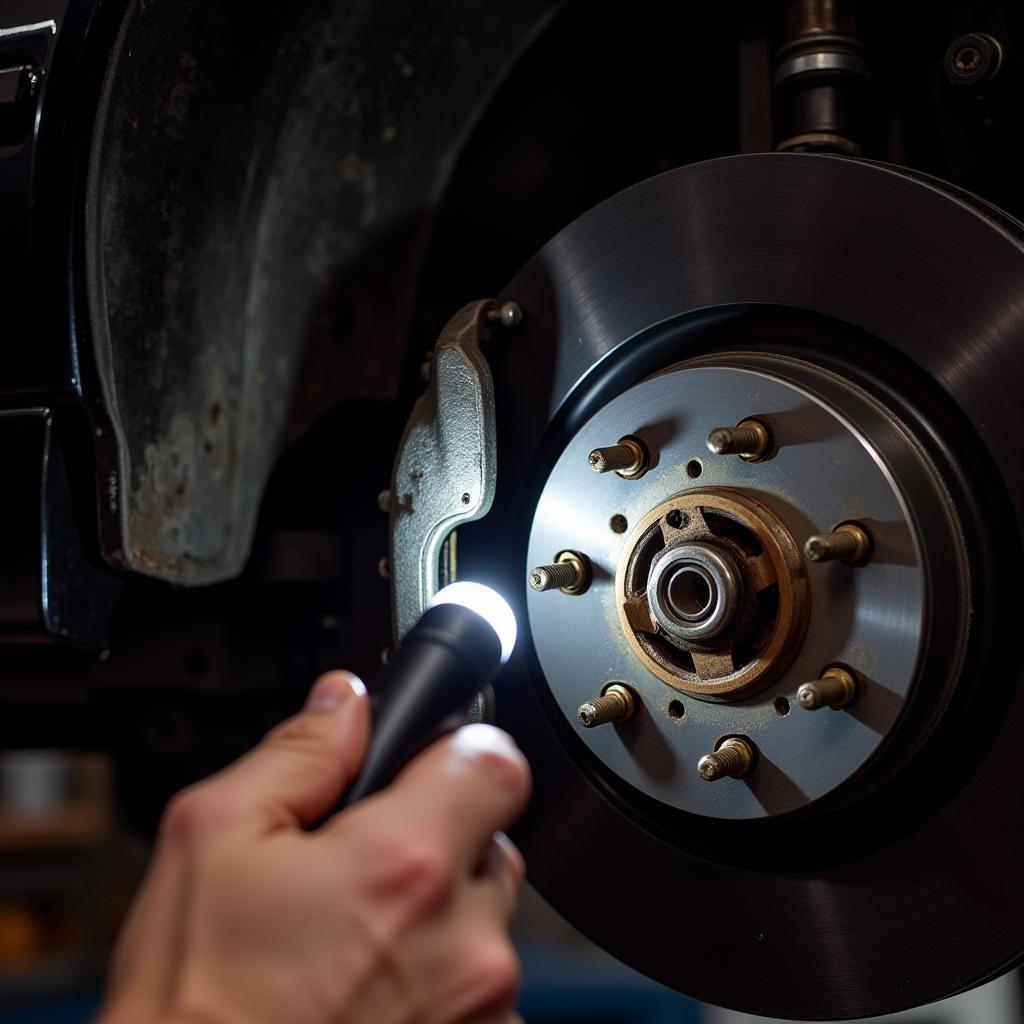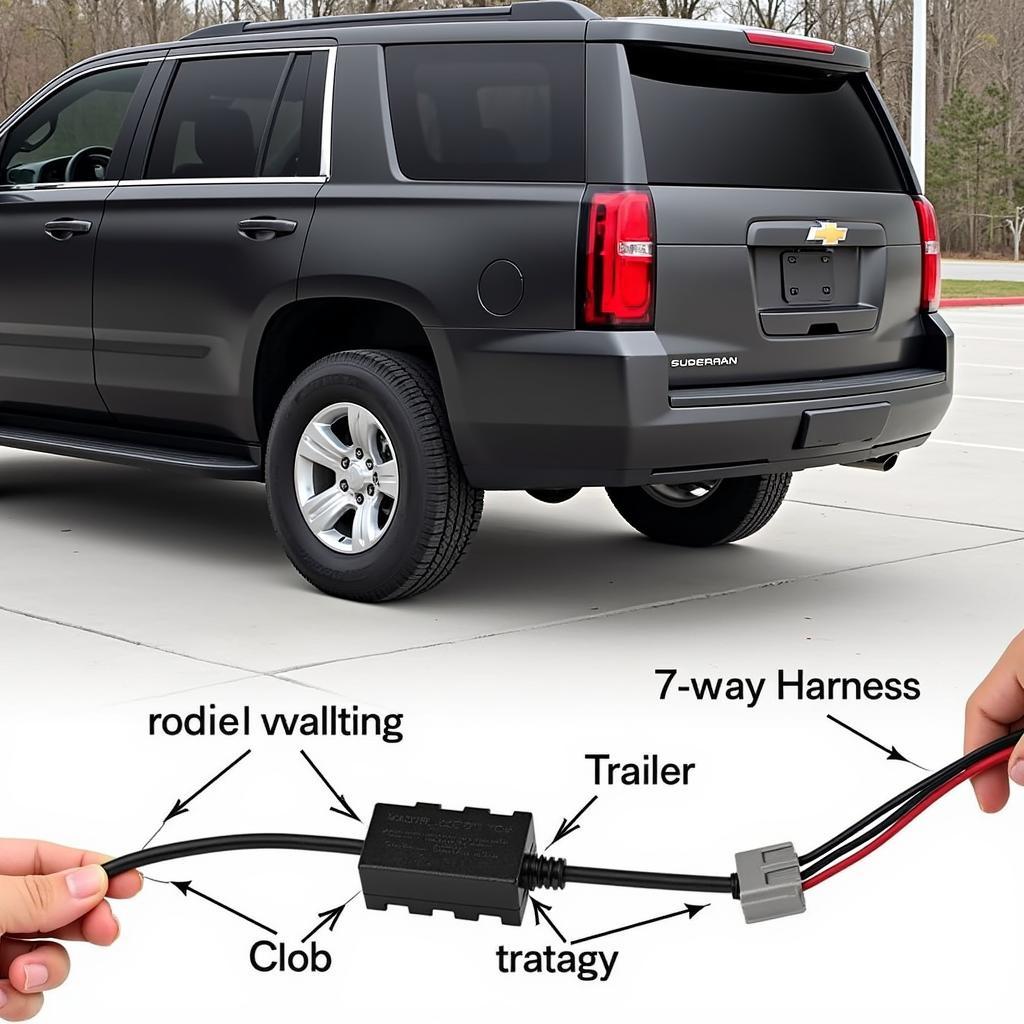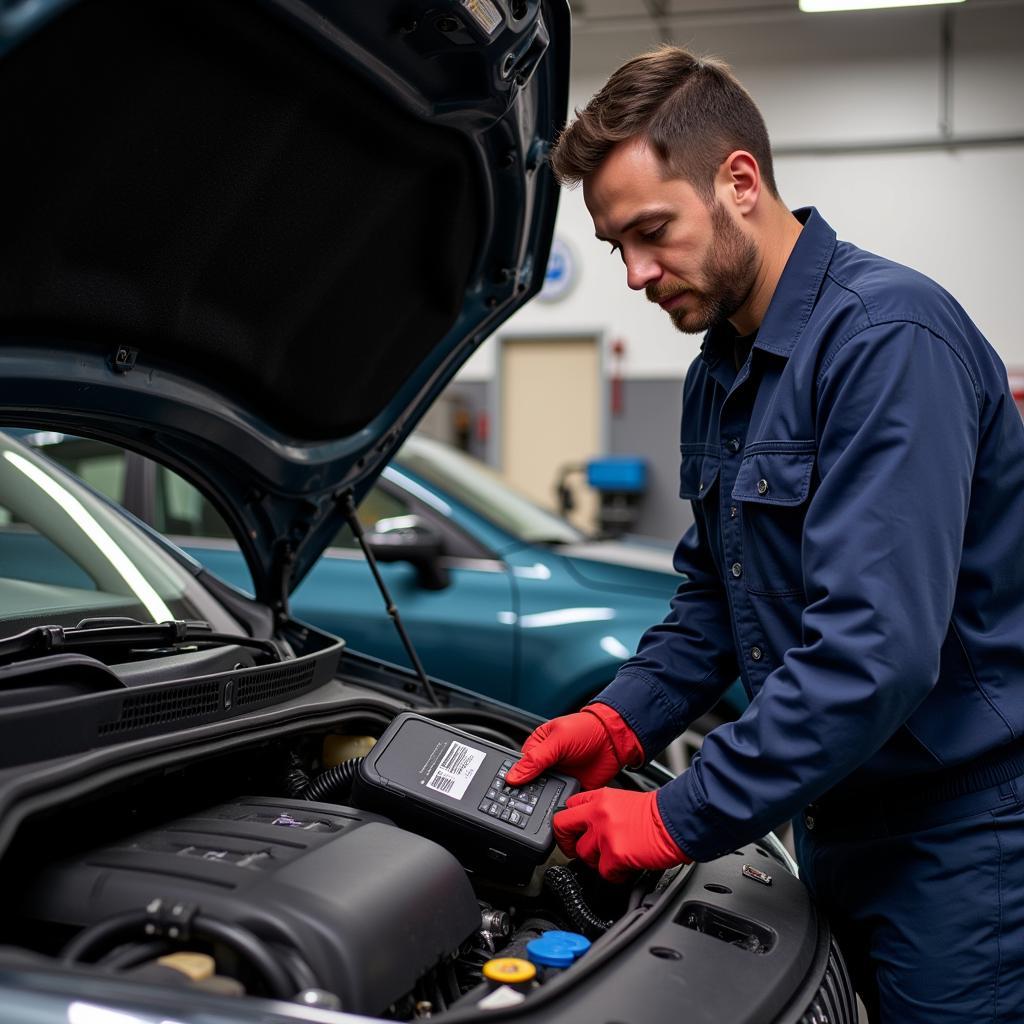The dreaded brake lining warning light on your BMW E30 can be a source of anxiety. This article dives into the common causes of this warning light, providing troubleshooting steps, potential solutions, and expert insights to help you address this issue and get your classic BMW back on the road safely.
Understanding the BMW E30 Brake Lining Warning Light
This light is designed to alert you to potential issues with your braking system, specifically the wear of your brake pads or shoes. While it can sometimes be triggered by a faulty sensor, it’s crucial to address this warning promptly to avoid compromising your safety. Ignoring the warning light can lead to further damage and potentially dangerous driving conditions. This applies to all E30 models, from the 316i to the sporty M3.
Common Causes of the Brake Lining Warning Light
There are several reasons why your E30’s brake lining warning light might be illuminated. The most common culprits include:
- Worn Brake Pads/Shoes: This is the most frequent cause. As your brake pads wear down, they eventually reach a point where the sensor triggers the warning light.
- Faulty Brake Pad Wear Sensor: The sensor itself can malfunction, triggering the light even if the brake pads are still good.
- Low Brake Fluid: Low brake fluid can sometimes activate the brake lining warning light, indicating a potential leak in the system.
- Damaged Wiring: Damaged or corroded wiring to the sensor can disrupt the signal, causing the warning light to illuminate.
Troubleshooting the Brake Lining Warning Light
Before rushing to the mechanic, there are some simple checks you can perform yourself:
- Visually Inspect the Brake Pads: Carefully examine the brake pads through the wheel spokes. If they appear thin or worn down to the metal backing plate, they need to be replaced.
- Check the Brake Fluid Level: Locate the brake fluid reservoir under the hood and check the fluid level. If it’s low, top it off with the correct brake fluid specified for your E30.
- Inspect the Brake Pad Wear Sensor: Locate the sensor on the brake caliper and check for any visible damage or corrosion to the wiring.
 Inspecting BMW E30 Brake Pads
Inspecting BMW E30 Brake Pads
Solutions for the Brake Lining Warning Light
Depending on the cause of the warning light, the solution might involve:
- Brake Pad/Shoe Replacement: If the pads are worn, they need to be replaced. This is a relatively straightforward job that can be done at home with basic tools.
- Brake Pad Wear Sensor Replacement: If the sensor is faulty, it will need to be replaced. This is often done at the same time as a brake pad replacement.
- Brake Fluid Leak Repair: If low brake fluid is the culprit, you’ll need to find and repair the leak. This might involve replacing brake lines, calipers, or other components.
- Wiring Repair: Damaged wiring will need to be repaired or replaced to restore proper function to the sensor.
“Regular brake maintenance is key for any vehicle, especially a classic like the E30,” says Hans Dieter, a veteran BMW mechanic with over 30 years of experience. “Addressing the brake lining warning light promptly can prevent more serious issues down the line and ensure your safety on the road.”
Remote Diagnostics and Programming
Modern technology allows for remote diagnostics and programming of certain vehicle systems. While not always applicable to the E30’s brake system, it’s worth exploring if you suspect a more complex issue. Remote services can sometimes offer quicker and more convenient solutions.
Preventing Future Brake Lining Warning Light Issues
- Regular Brake Inspections: Inspect your brakes regularly, at least every 12,000 miles, or more frequently if you drive in demanding conditions.
- Quality Brake Components: Use high-quality brake pads, rotors, and fluids to ensure optimal braking performance and longevity.
- Proper Driving Habits: Avoid aggressive braking and coasting to a stop whenever possible to reduce wear on your brakes.
“Investing in quality brake components and adhering to a regular maintenance schedule will save you money and headaches in the long run,” adds Hans. “Preventative maintenance is always the best approach.”
Conclusion
The BMW E30 brake lining warning light is a crucial safety feature. Understanding its causes and how to troubleshoot it is essential for maintaining your vehicle’s safety and performance. Addressing this warning promptly can prevent more serious and costly repairs down the line. Don’t ignore it – your safety depends on it.
FAQ
- Can I drive my E30 with the brake lining warning light on? While you might be able to drive a short distance, it’s not recommended. It’s crucial to address the issue immediately to avoid potential brake failure.
- How much does it cost to replace brake pads on a BMW E30? The cost will vary depending on the parts and labor, but it’s typically a relatively affordable repair.
- How often should I replace my E30’s brake fluid? BMW recommends changing the brake fluid every two years, regardless of mileage.
- Can I replace the brake pads myself? Yes, with basic tools and mechanical knowledge, it’s a DIY-able job.
- Where can I find quality brake parts for my E30? Reputable auto parts stores and online retailers carry a wide selection of brake components for the E30.
- What type of brake fluid should I use in my E30? Consult your owner’s manual for the specific brake fluid recommended for your model year.
- Is it safe to ignore the brake lining warning light if my brakes feel fine? No, it’s never safe to ignore the warning light. Even if the brakes feel fine, there could be an underlying issue that needs to be addressed.


